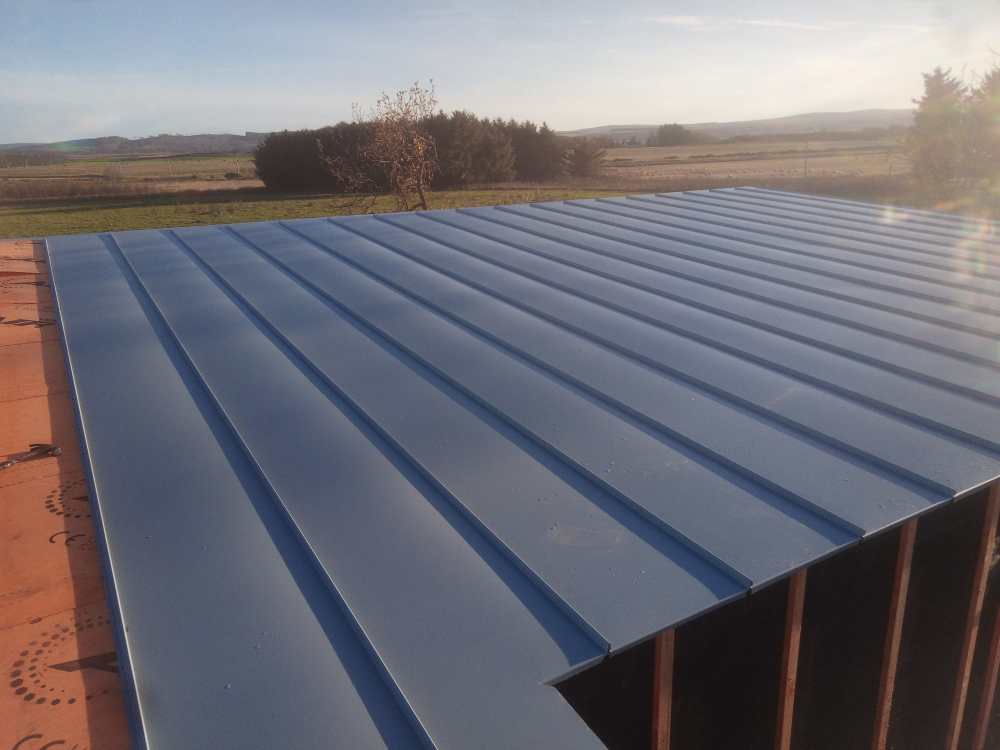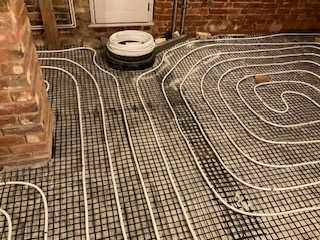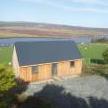Leaderboard
Popular Content
Showing content with the highest reputation on 11/13/24 in all areas
-
Probably best not to do that. Many heat pumps (it is said) want to be exactly horizontal to balance the fan bearings. I certainly wouldn't tilt the pump without asking the manufacturer if its OK.3 points
-
2 points
-
I'm actually sort of jealous of your blank canvas! If you can get someone to do your floor - think about underfloor heating - this is an enabler for the highest efficiencies in a heating system as its basically the biggest radiator you can have. On heat pumps, if your knowledge comes from reading anything in any newspaper or from the comments at the bottom of articles on heat pumps - forget what you think you know. They don't need highly insulated and leak-free houses, they could heat a barn if designed to do so. Insulation helps make the heat pump you buy smaller and the emitters you need to be smaller, i.e. if i put loft insulation in my home it's heat loss goes from 6.3kW to 3.8kW (obviously already done it) - and it means i can by the 4/5kW heat pump size rather than a 7/8kW. (side note that efficiency can actually be marginally higher on higher heat loss properties, but that isn't a reason not put insulation in, see the graphic below where the 10kW model at 35c is 5.03 vs the 4.48 on the 5kW, but the 5kW is much cheaper to buy) Whilst you could do it with oil and have big radiators and low flow temps - the efficiency gains on oil / gas are in the region of going from 75% to 85% efficiency - so like 10% increase, not nothing. With heat pumps you can be talking multiples. In the example below on a Valliant heat pump, going from 55c flow to 35c there is a increase of 142% on the 5kW model. On your point about being held to ransom by electricity companies - i would argue its almost exactly the same with heating oil companies or whatever. Potentially think about a woodburner as a backup if you're nervous? All I would say is that you need a good engineer - not just any joe bloggs off the street to do a heat pump job - whilst they are actually technically simpler than oil / gas systems - the training across the industry is patchy at best. To find good engineers - look at some of the ones on HeatpumpMonitor.org that are clearly doing great installs. Last thing i'd ask is a simple question - do you think oil heating is the future?2 points
-
On the 3 kids bedroom doors on the old house I fitted a nice plinth on the back of the door. 4"x 18" with no nails and a couple of thick thread wood screws to pull it tight until the glue set. On that plinth I fitted the hooks. Never had any issues at all over the years and it held lots of coats, dressing gowns, and school bags.2 points
-
2 points
-
At my Dad's, before he passed, the doors etc were the original from 1960. Hardboard skin with paper / cardboard inside. Hardly anything had been changed or updated. We needed to convert the bathroom one to a sliding door. Firstly so he could manoeuvre his walker through the hall, also in case he fell against the inward opening door. That plus fit a big handle which he would quite likely hang on. I Starrett cut big holes, then glued and screwed timber rounds from the other side: Put it this way, I could hang on it:1 point
-
I have no idea what is going on. But when sampling (in statistics) you have to make sure that the sample rate is high enough to capture enough data (Shannon sorted this all out and it is why we have MP3s and reliable internet). To me it looks like it is only sampling every few minutes, and they are not coinciding with reality. https://en.wikipedia.org/wiki/Nyquist–Shannon_sampling_theorem1 point
-
This sentence feels likes it's only a slight spelling mistake from @Pocster levels of innuendo. Back to the door. The simplest thing I can think of is to buy some more adhesive backed cork tiles and fit them as neatly as you can. Or a far greater concern would be and draughts so make sure it seals excellently.1 point
-
Fairly simple. Yes, a 24 or 48way hub. Plug all the wires into the hub, doesn't matter where. You may need to crimp plugs on them if they don't already have them (or call a nerdy teenager). Use the 'B' wiring scheme ( https://www.tlc-direct.co.uk/Technical/Networking/Networking.htm ). Buy a cheap cable tester unless you've done similar crimping before. Plug one similar network cable in from the router. Label the wires with a shrink wrap labeller if you're keen - invent your own labelling scheme. Assuming you have full fibre and an OpenReach-installed ONT - plug that into the external port of the router with a shortish network cable. Or if you have FTTC etc plug the phone cable into the external port of the router. Now you need to set-up the router with your external ISP logon (you have ordered internet service right?). The same nerdy teenage will help. Then test the basic firewall operation: https://www.grc.com/x/ne.dll?bh0bkyd2 choose proceed and all service ports and check they all show up green. Run a speed test ( https://broadbandtest.which.co.uk/ or similar) and check what you've got.1 point
-
We are on E7 it's all done through the single smart meter, no second required, no dedicated circuits, so that could be what's happened also1 point
-
Fortic tank, common in flats before UVCs. Hence poor head (1 m if you are lucky) and need for shower pump. Replace with UVC, all sorted. Use E7 if you can get it back, otherwise you will need a smart meter and their ToU tariffs.1 point
-
1 point
-
Doesn’t sound silly to me. Even if the condensate comes from every element inside the box you’d think it would all be herded together so it would all fall out of one pipe. Well I would anyway.1 point
-
Tilt it back on it's feet to see if the condensate drips off the back of the unit and in to the gravel?1 point
-
The difference between a wood burner and bacon is that you can choose to eat a bacon sandwich and it only affects your own health whereas a wood burner pollutes the air for everyone. You can protect yourself from the dangers of bacon, but it needs action at a government level to protect us from pollution.1 point
-
1 point
-
Did notice a Passivhaus Architect in Forres when I was looking a few years ago. Passive slab, not sure anyone will come this far North, certainly when I was looking a few years ago. I ended up with strip foundations and stub walls and made that thermal bridge free.1 point
-
I don’t really know the answer but the Geocell replaces the Type 1 and the standard insulation. Clearly it’s more expensive than Type 1 but how it measures up against standard insulation I don’t know. We used it for a detached garage and it worked really well. If I were to build another house (ain’t/wont happen) I would definitely consider it for the insulted slab over the PIR bucket.1 point
-
I'm joining the forum to look for support and advice on a range of issues but also hope to support and encourage others where possible. My wife and I are having another go at planning permission for a replacement house here in the Forest of Dean. We have a site and 1960s bungalow which has served its time. We need advice on utilities (electricity supply), demolition and many aspects of the replacement/rebuild which we want to have a low impact environmentally and to make the most from the site. Thanks in advance! Don1 point
-
There is a lot of ignorance regarding the dangers of wood smoke. There was a similar ignorance towards the dangers of asbestos until recently. Even today a lot of older tradesmen downplay the risks of asbestos. The Chilean government are trying to move people away from using wood burners and onto cleaner alternatives like gas. They have done a lot of studies into the dangers of wood burners. The Scottish Government are going to cause more health problems with this new legislation, more people will get wood burners instead of gas which will cause a big decrease in air quality. https://www.ccacoalition.org/news/chile-takes-action-air-pollution1 point
-
All piston compressors are noisy. Box it or outdoor enclosure is all you can do for that... The oilfree vertical you've got aint 10cfm, maybe calculated but no way in the real world. The piston leaks like a sieve on them. Plus IIRC that model is a brush motor and revs it's n*ts off. ^ that one in the piccy above is the same unit that Lidl sell occasionally and is a real sweetie for the money, the pump is overbuilt compared to SIPs and Sealeys of the same class required cfm depends on the type of tool, and whether the demand is continuous or intermittent. Eg for a rattle gun, hose size is more important than pump capacity- it needs a good jag of air to break a bolt loose which even a small tank will contain, but if there's a bottleneck at a hose or fitting well... Tell us what tools they are and how you use them1 point
-
It depends on where the cold feed is teed into the system, if its just before the pump (suction) then the pump discharge head is the "height"+the pump head, in your case, 2M+3M=5M. If its after the pump on the discharge side then the pump suction head is the height-the pump head, 2M-3M=-1M, pump running with a negative head of 1M. The rad in my converted attic runs with a very slight negative pressure, if you open the rad vent with the pump running then no water comes out but as soon as you stop the pump, water will start bleeding out, its run that way for ~ 30 years with no problems and heats up fully, as stated above, I require a pump head of 3.6M to fully heat all my rads.1 point
-
Ive used it, and your description of "shoggled" is about right. Its nothing like whacking down type 1. Significant voids or gaps remain afterwards. A geotextile membrane was then laid before concrete/lime crete. If you didnt, the voids are such that the concrete would fall down into the voids, negating its insulating properties. The main reason i used it aside from being "breathable" (old house) if i can use that term is that it reduced excavation as it is both the sub base and insulating layer combined. Im not one for taking pics, heres a shot with geocell, membrane and heating pipes down1 point
-
Whatever you choose, I'd make sure they're A1-S1-T1 rated, and don't underestimate the competence of the roofer in ensuring longevity. I spent ages comparing colour, price, quality and availability and I'm pi$$ed-off at having 2 or 3 fail every year/18 months since install (5 years ago). No idea what the problem is, but at least the roofers are honouring the 10 Yr guarantee albeit in slow time...1 point
-
Ha - Not something I have direct experience of but I know of the "Probity in Planning" guidance document for councillors: https://www.local.gov.uk/sites/default/files/documents/34.2_Probity_in_Planning_04.pdf As per section 5 I believe the councillor in question would have to withdraw from the committee since if he's already given his view before committee he has a "closed mind" with regards the decision to be made.1 point
-
I should've added that in, sorry. Thames Water and South East Water have both stated it's not theirs.1 point
-
Yes, that would be the easiest thing to do. I've done on the same kind of door, but between the utility and pantry where the two give-away tabs which appear on the other side of the door don't offend. The problem in bedroom case is that the bedroom in question is entered via the living-room, so two shiny aluminium tabs being visible over the door would be unfortunate. Even if they were painted the same colour as the door, they might still be discernible. I wonder if I could modify such a "hanger", by cutting off the two overhanging tabs, and drilling holes through the metal that runs across the top of the door, so that screws could be inserted downwards into the door, to keep the "hanger" in place.1 point
-
I think it's hard to persuade the general public that burning wood is bad, in the same way that it's hard to convince people that eating bacon is bad. If humans have been doing something forever, surely it can't be that bad? Unlike those newfangled heat pumps and EVs which are clearly not to be trusted.1 point
-
You will need a toggle type fixing, pretend the door is a thin hollow wall.1 point
-
A door overhang would give the effect, tho’ not quite so stylish.1 point
-
I would be reluctant to put a coat rack or hook on these doors, they are very flimsy in construction (tho look good)) for a single lightweight dressing gown I would use a rivet type fixing like this. The first one SM04020, not sure where you will get them but I have used them in the past https://rawlplug.co.uk/product/sm-interset/1 point
-
1 point
-
Yes type one is aimed at good compaction and achieving density. Add a little cement content and you have a lean mix that forms a lot of the sub base of our motorways. I think Geocell is much more like a single size aggregate.. like railway ballast. Now as an SE I should be using some technical terms.. but my best answer is that for Geocell which is pretty much a single size material it just needs "shoogled" into place. Thrashing it to death with say a 10 tonne vibrating roller will just damage it. I've specified this stuff and the results (feed back) so far are good for the loads I want it to carry. Goecell is not new in terms of material composition. It's stable, not frost succeptiable for example. It is bulky and a bit of a shit to shovel apparently. The top of it is a bit rough so maybe needs a bit of blinding. I'll leave the last bit out as this is my IP property. Now @Alan Ambrose for example. The NHBC put a limit on hardcore fill for rafts foundations at 600mm.. and this would apply to say EPS and XPS material on hard core. I wonder if Goecell have ideas o how thick thierstuff can be? Their stuff is not heave prone, not frost prone and has insultating properties. This has got me thinking.. can we do rafts with lots of Geocell and little if no EPS or EPS where we need to go deep to avoid clay and tree root heave for example. Now Geocel is light weigth so on bad ground we dig out some crap stuff and replace with a lighter structural fill.. now we further reduce the soil loadings. I'm just chewing the fat here folks but BH is at the cutting edge of things.1 point
-
0 points
-
No, separate: "any architects (and builders)" and "any builders (and architects)"0 points













